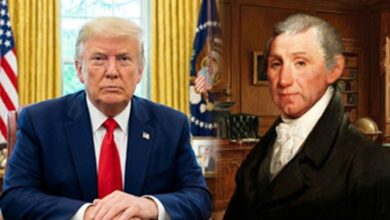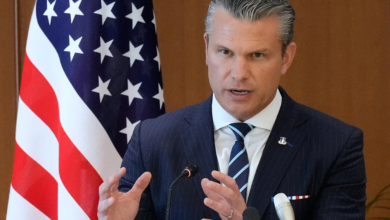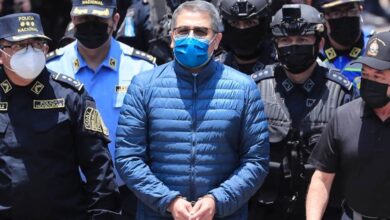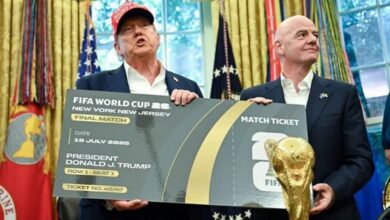Trump Rewrites Latin America’s Balancing Act Between Washington and Beijing
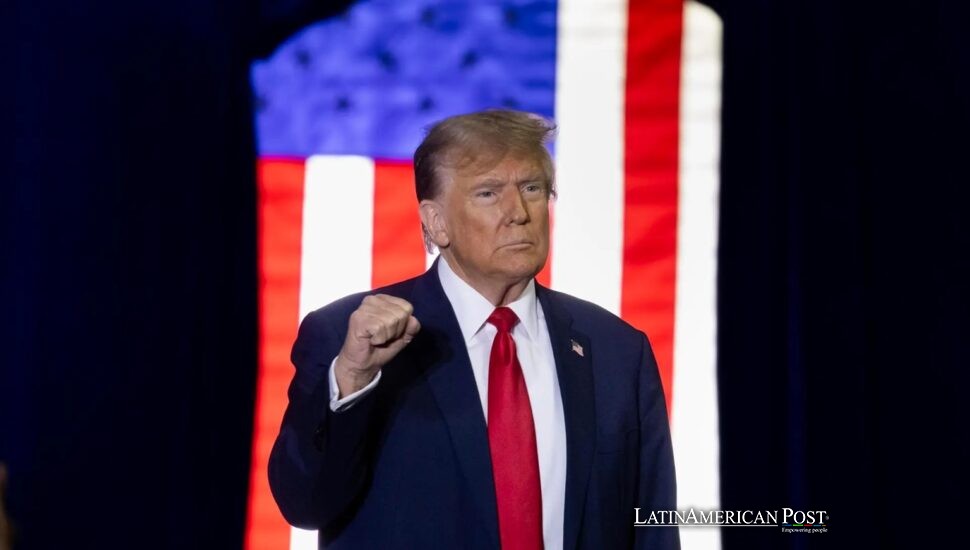
Donald Trump’s return to the White House has shaken Latin America’s foreign policy calculus. From Mexico’s tariff pivot to Brazil’s judicial defiance, governments are recalibrating between Washington and Beijing. The result isn’t tidy alignment, but pragmatic hedging—reshaping the hemisphere’s great-power relations in real-time.
Mexico’s Pragmatic Bet on Washington’s Rules
In Mexico City, President Claudia Sheinbaum is staking her country’s future on predictability with its northern neighbor—even if that means angering its second-largest trading partner. She recently sent Congress a proposal to impose tariffs of up to 50% on Chinese imports, including autos, steel, textiles, and pharmaceuticals.
Her government calls it an “industrial defense” measure, but the timing—just as the US-Mexico-Canada Agreement (USMCA) approaches its review—tells another story. “It’s clear that Mexico is privileging U.S. supply-chain security, even at the risk of Chinese retaliation,” one senior trade official told Americas Quarterly (AQ).
The logic is brutal but simple. Mexico’s factories, jobs, and finances are bound tightly to the North American market. Tariff threats from Washington matter more than angry communiqués from Beijing. Sheinbaum’s hedging strategy, as AQ reported, is to align with U.S. rules where it counts while maintaining trade corridors to Asia—narrow, cautious, and deniable.
China’s embassy in Mexico City accused the new administration of “bowing to U.S. pressure.” Yet the math speaks louder than diplomacy. Nearly 80% of Mexican exports flow to the United States. For a country built on cross-border manufacturing, choosing Washington’s rules is less a preference than a survival mechanism. As one analyst put it to AQ: “In a storm, you tie yourself to the biggest ship—even if you don’t love the captain.“
Brazil’s Defiance—and the Boomerang of Coercion
If Mexico is edging closer to Washington, Brazil is moving in the opposite direction. Trump’s 50% tariff on Brazilian exports—one of the steepest levies imposed on any U.S. trading partner—landed like a slap. Brazilian goods bound for the U.S. plummeted, while exports to China surged by 31%, according to AQ, cushioning the blow.
Meanwhile, Brasília’s judiciary continued to press ahead with its own agenda. Despite behind-the-scenes pressure from Washington over the prosecution of former president Jair Bolsonaro, Brazil’s courts sentenced him to 27 years for corruption and abuse of office. The decision became a rallying cry for judicial independence and national sovereignty.
Public opinion followed suit. AQ’s polling shows that positive views of the U.S. have fallen sharply, while perceptions of China are on the rise. President Luiz Inácio Lula da Silva seized the moment to frame his defiance as patriotic, penning a column in The New York Times that AQ quoted widely: “President Trump, we remain open to negotiation for mutual benefit. But Brazil’s democracy and sovereignty are not on the table.“
It was quintessential Lula—part statesman, part street fighter. By turning foreign pressure into a domestic rallying cry, he strengthened his hand at home even as he risked friction abroad. Ironically, Washington’s coercive tactics may be achieving the opposite of their intent. “Every tariff makes China look more reliable, not less,” a former Brazilian trade minister told AQ.
Lula and Trump exchanged a brief, polite handshake at the UN this fall. But Brasília’s trajectory is clear: it will not be bullied into compliance. The world’s largest beef exporter and a climate heavyweight is signaling that it will defend its own institutions—and sell its soy and iron ore to whoever pays fastest.
Colombia and Argentina Test the Art of Balance
In Colombia, the shift is quieter but no less significant. Once Washington’s staunchest ally, Bogotá is shifting its allegiance toward Beijing. The Belt and Road Initiative welcomed Colombia this year, as did the BRICS New Development Bank. Bilateral trade with China has hit record highs, threatening to dethrone the U.S. as Colombia’s top import partner.
The U.S., frustrated, “decertified” Colombia’s anti-drug efforts for the first time in three decades—placing it alongside Venezuela and Myanmar. Aid still flows, thanks to a waiver, but the message stung. AQ reports that 34.5% of Colombians now favor a tilt toward China, nearly equal to those backing the U.S.—a dramatic shift accelerated by online spats between Presidents Gustavo Petro and Trump.
In Argentina, ideology meets insolvency. President Javier Milei has waved the libertarian flag and promised fealty to Washington. Yet the lifeline keeping his economy afloat still runs through Beijing. China remains Argentina’s top buyer of soy, beef, and lithium, and its currency swaps help stabilize Buenos Aires’ battered reserves.
“Rhetoric goes one way, cash flows the other,” an Argentine economist quipped to AQ. Indeed, two gestures tell the tale: a new direct flight from Buenos Aires to Shanghai by China Eastern Airlines—the world’s longest commercial route—and eased visa rules for Chinese tourists, a nod to reciprocity after Beijing’s visa-free offer to Argentines. Milei may rail against “communist regimes,” but pragmatism is paying the bills.
Ports, Perceptions, and the Long Game
Nowhere is the new geometry more precise than in Peru’s Chancay mega-port, built for $3.5 billion by China’s COSCO Shipping. It’s a concrete symbol of Latin America’s pivot toward Asia. Within weeks of Trump’s inauguration, a direct Guangzhou-Chancay service cut Pacific shipping times by 10 days and slashed logistics costs by 20%, AQ reported.
U.S. officials have floated threats to penalize goods routed through Chancay, but Lima isn’t listening. The port hums, with Chinese capital continually arriving, and investors find less red tape than in Western finance. “Chancay is a reality, not a project,” Peru’s economy minister told AQ. “And no one is turning back the ships.“
Across Central America, the map appears as a mosaic: Nicaragua deepens its ties with China; Guatemala and El Salvador lean back toward Washington. It’s less about ideology than leverage. “Latin America is not choosing sides—it’s choosing terms,” AQ’s regional analyst concluded.
That is the quiet revolution underway. After decades of being treated as a peripheral partner, the region is discovering power in ambiguity. Xi Jinping offers predictability and cash; Trump offers markets and tariffs in equal measure. Most leaders are hedging, not declaring allegiance.
Also Read: Brazil’s Cattle Tag Revolution: Can Traceability Save the Amazon—and Its Beef?
In Mexico, that means defending the North American trade pact while shielding select Chinese investment. In Brazil, it’s using U.S. pressure as proof of independence. In Colombia and Argentina, it’s a m

